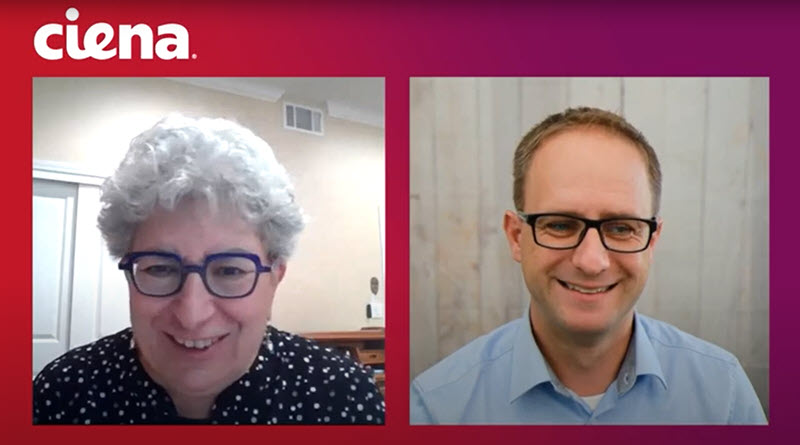Diving deep on 10G-Pluggables for high speed PON
In 2020, Ciena introduced our pluggable 10G PON offering to help network operators address key opportunities in next generation Cable MSO access, 4G/5G RAN, and low-cost metro access bringing more value to the network edge through access and aggregation. What has happened since and what is going on in the overall PON market?
Ciena’s Chief Technology Officer of EMEA, Jürgen Hatheier, recently joined Omdia’s Chief Analyst, Julie Kunstler, for a Q&A session to discuss 10G-Pluggables for High Speed PON and Ciena’s 10G PON solution. Here are just a few highlights from their conversation. Click here to watch the full interview.
Julie Kunstler: Why enter the PON market from Ciena’s perspective?
Jürgen Hatheier: We work with our ethernet access customers to define our strategy and help us to verify certain moves we want to make in the market. Through those efforts they have asked us to consider upgrading our offering to also include shared fiber products, so XGS-PON couldn't have been a better fit for us. As we look at GPON and EPON, those technologies have been in the market now for over 15 years and are somewhat running out of steam. As consumers look for higher tiers of bandwidth and lower latency, a symmetrical option is quite important as well.
Not only do we expect that applications will become a whole lot more latency-sensitive but also the bandwidth expansion is going to continue to drive evolution and revolution in the PON space. We don't want to be a “me too” so all our PON solutions are really based on open scalable architecture which fits well into our Universal Aggregation and Access strategy.
Julie: By fitting a 10G PON pluggable into an existing solution, does that mean that an operator can easily add PON to what’s typically been a point-to-point fiber topology and run it from the same software?
Jürgen: Yes, absolutely - that's just one out of many use cases. You can start using an existing access ethernet switch or router and put in a PON pluggable, and within our platform we create that seamless transition not only to run both technologies in parallel but also to provide seamless operation for the NOC (network operations center) for customer service so that we can provide this holistic and universal perspective on the consumer, independently of what the access technology is. What's very important for service providers is that the PON offering doesn't just stop at the broadband connections. So moving active Ethernet to XGS-PON is one, but we support many other applications like 5G backhaul, which when we have small cells out in the field, help us to provide a cost-efficient low latency and effective solution for the operator.
Julie: Can you talk a little bit more about low latency, the types of applications that are sensitive to latency, and how Ciena’s PON solution can help support them?
Jürgen: We all know how sensitive enterprises and business applications are to latency now with cloudification. If you just think about the last ten years, we have spent moving all the workloads from the enterprises from on-prem data centers into the cloud, and now with the edge cloud movement, it is somewhat coming closer again to the edge, so it is essential to reduce workload delay to the cloud.
Our solution helps with technologies such as FlexEthernet (FlexE) in the backhaul to reduce latency for the span of up to 60%, so independently of how you use access technologies such as PON or dedicated Ethernet, it is how you structure and architect the backhaul to ultimately deliver the very low-level and fast routing and switching environment that gets you best latency.
Even for our residential customers, offers like gaming, security, and video conferencing are calling for low latency and high reliability. Just 18 months ago, hundreds of millions of home offices were created overnight and many users are still suffering because they don't have a PON-like experience. If we want to bring a real office experience into every home, the focus for service providers and governments must be geared toward building out the Fiber to the Home (FTTH) to provide that competitive edge for end users.
Watch the full video recording below for the entire conversation between Ciena’s Jürgen Hatheier and Omdia’s Julie Kunstler on 10G-Pluggables for high speed PON.







